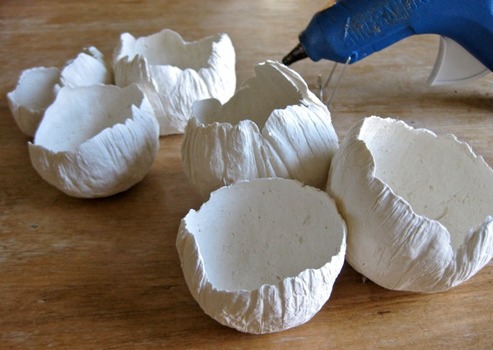Make a paper clay sculpt
Make a small paper clay sculpture by mixing paper pulp and glue, shaping forms, then drying and painting to explore texture and creativity.



Step-by-step guide to make a paper clay sculpture
How To Make A Paper Mache Sculpture | Bird Clay Sculpting | Balloon Armature
Step 1
Tear the scrap paper into small pieces about the size of a postage stamp using your hands.
Step 2
Put the paper pieces into the bowl and pour in enough water to completely cover them.
Step 3
Let the paper soak for 20 to 30 minutes so the fibers soften and break down.
Step 4
Mash the soaked paper with your hands or the spoon until it becomes a fibery pulp.
Step 5
Scoop the pulp into the cheesecloth and squeeze firmly to remove excess water until the pulp is damp but not dripping.
Step 6
Add white glue to the drained pulp at about half the pulp volume and mix with the spoon until it becomes a claylike paste.
Step 7
Knead the pulp mixture with your hands for 1 to 2 minutes until it feels smooth and holds together.
Step 8
Place the mixture on the wax paper or cardboard base and shape your small sculpture using only your hands.
Step 9
Use a toothpick or fork to add texture and details to your sculpture.
Step 10
Put the sculpture in a warm dry place and leave it to air dry until hard which can take 24 to 72 hours.
Step 11
Paint your dried sculpture with thin coats of paint using the brush.
Step 12
Let the paint dry completely before touching or displaying your sculpture.
Step 13
Share your finished paper clay sculpture on DIY.org
Final steps
You're almost there! Complete all the steps, bring your creation to life, post it, and conquer the challenge!


Help!?
What can I use instead of cheesecloth or white glue if I can't find those materials?
If you don't have cheesecloth for step 5, squeeze the pulp in a thin cotton dish towel, old T-shirt, or fine-mesh strainer, and if white glue for step 6 is unavailable use another PVA/school glue or a cooked flour paste at a similar volume ratio.
My pulp won't hold together or my sculpture collapses while shaping — what can I do?
If the mixture won't hold in step 7 or collapses during shaping in step 8, squeeze more water out in step 5, add a little more white glue in step 6, and knead the pulp longer before shaping.
How can I adapt this paper-clay process for different ages or skill levels?
For younger kids (3–5) tear larger paper pieces in step 1 and have an adult complete soaking and draining (steps 2–5) while they press and texture damp pulp on the base (steps 7–9), and for older kids (8+) encourage longer kneading in step 7 and adding wire armatures before shaping in step 7 for taller pieces.
What are simple ways to extend or personalize the sculpture once the basic shape is done?
To personalize and enhance the project, press found objects or beads into the pulp while shaping (step 8), stir a little acrylic paint into the pulp at step 6 for colored clay, and after the sculpture dries (step 10) apply a clear sealer and then paint in thin coats (step 11) for durability and detail.
Watch videos on how to make a paper clay sculpture
How to make EASY Paper Clay with HOUSEHOLD ingredients || Paper Mache Clay for Models and crafts
Facts about paper crafts and sculpture
♻️ You can upcycle old newspapers and scrap paper into paper clay, turning trash into creative treasures.
⏱️ Paper clay often air-dries much faster than traditional clay and usually doesn't need firing in a kiln — perfect for home projects.
🛠️ Paper clay can be joined, carved, sanded, and repaired after drying, making it excellent for small detailed sculptures.
🌿 Paper pulp is mostly cellulose (plant fiber), which helps paper clay stay lightweight yet strong when dry.
🧻 Papier-mâché literally means "chewed paper" in French — artists have used it for masks, puppets, and models for centuries.
How do you make a paper clay sculpture?
What materials do I need for paper clay sculpting?
What ages is this paper clay activity suitable for?
What are the benefits and safety tips for paper clay sculpting?


One subscription, many ways to play and learn.
Only $6.99 after trial. No credit card required



